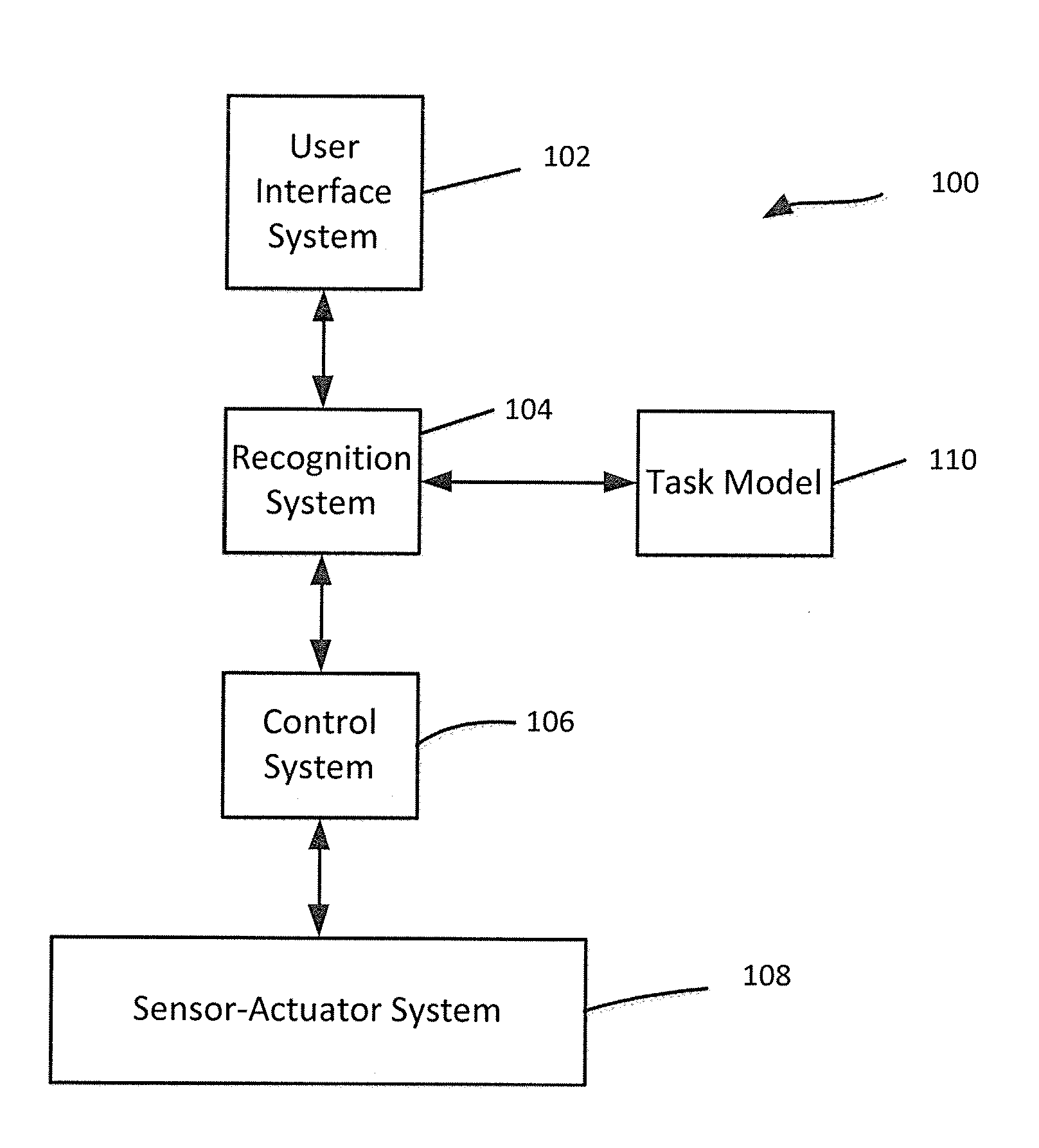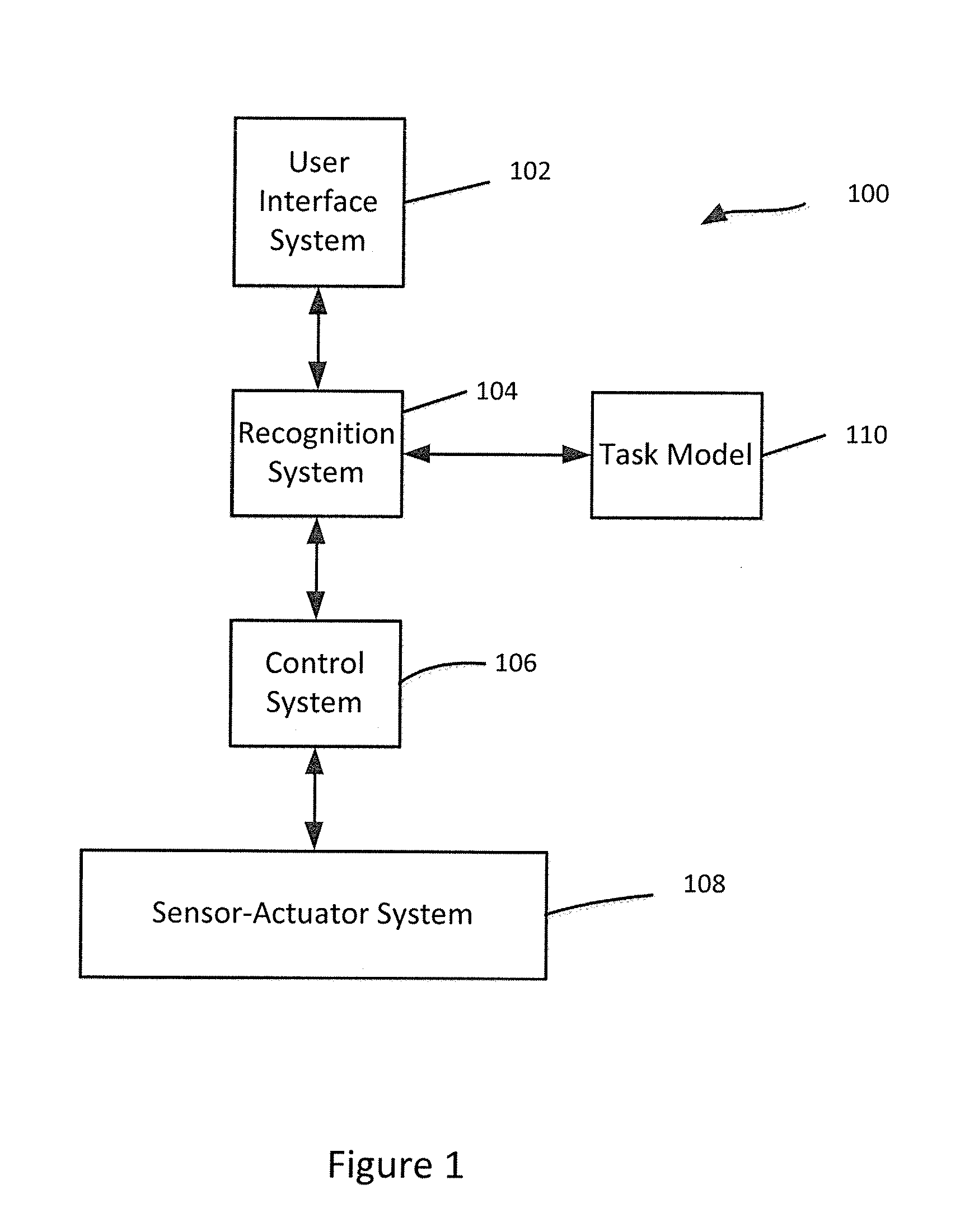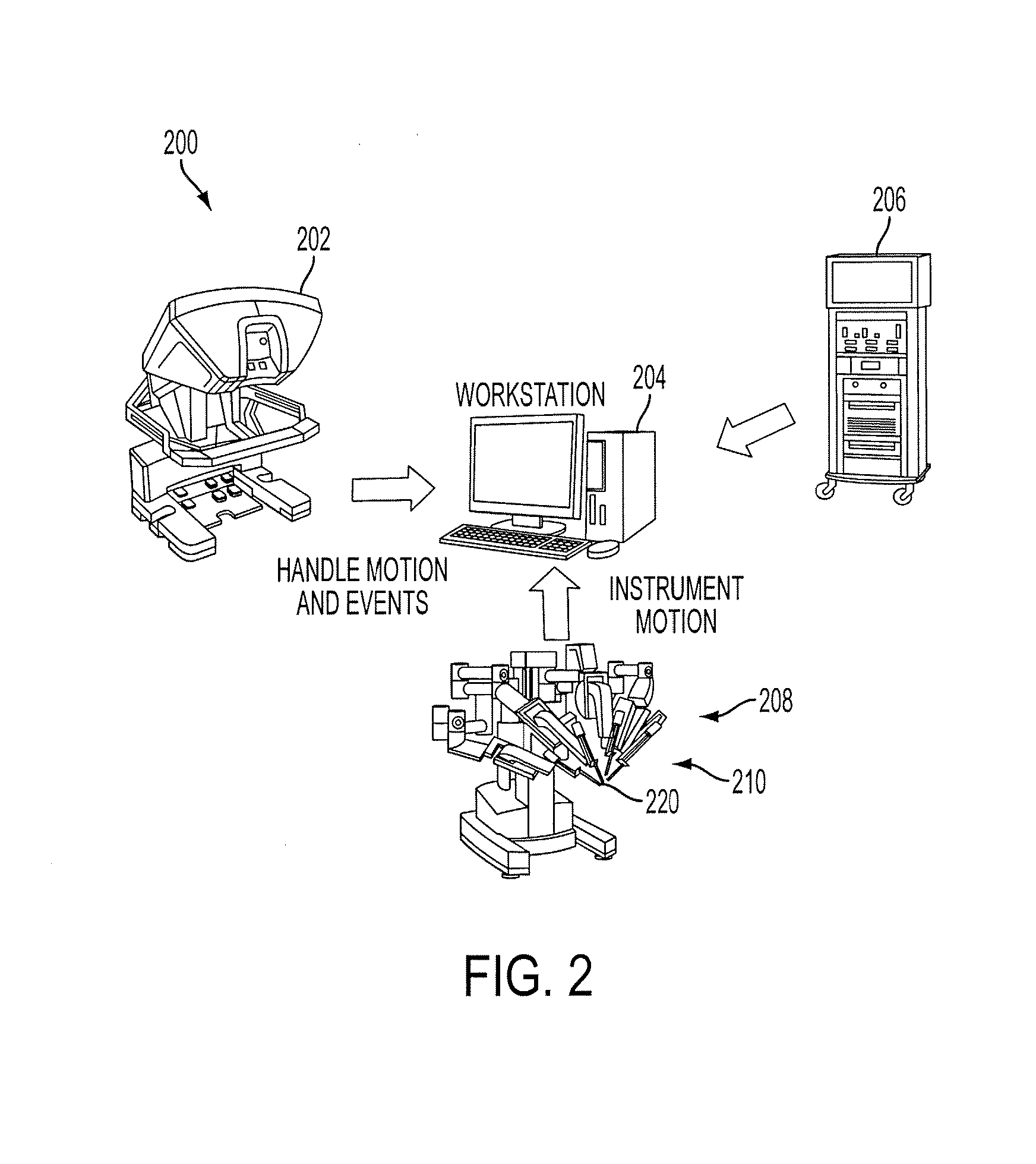Human-machine collaborative robotic systems
a robotic system and human-machine technology, applied in the field of robotic systems, can solve the problems of high workload of surgeons, inability to perform human-machine interaction, complex procedures,
- Summary
- Abstract
- Description
- Claims
- Application Information
AI Technical Summary
Benefits of technology
Problems solved by technology
Method used
Image
Examples
examples
[0042]The increased use of tele-surgical robots, such as the DA VINCI surgical system from INTUITIVE SURGICAL, Inc., provides new ways to teach, assess and perform surgeries. On the one hand, large sets of objective performance data can be collected from the robots (H. C. Lin, I. Shafran, D. Yuh, and G. D. Hager, ‘Towards automatic skill evaluation: Detection and segmentation of robot-assisted surgical motions,” Computer Aided Surgery, vol. 11, no. 5, pp. 220-230, 2006). On the other hand, the technology can permit automation of specific surgical tasks in the near future (J. van den Berg, S. Miller, D. Duckworth, H. Hu, A. Wan, X.-Y. Fu, K. Goldberg, and P. Abbeel, “Superhuman performance of surgical tasks by robots using iterative learning from human-guided demonstrations,” in ICRA, 2010, pp. 2074-2081). However, it has been unclear how collected performance data can be used to design efficient human-machine collaborative systems that can adapt to the operator, to the surgical envi...
PUM
 Login to View More
Login to View More Abstract
Description
Claims
Application Information
 Login to View More
Login to View More - R&D
- Intellectual Property
- Life Sciences
- Materials
- Tech Scout
- Unparalleled Data Quality
- Higher Quality Content
- 60% Fewer Hallucinations
Browse by: Latest US Patents, China's latest patents, Technical Efficacy Thesaurus, Application Domain, Technology Topic, Popular Technical Reports.
© 2025 PatSnap. All rights reserved.Legal|Privacy policy|Modern Slavery Act Transparency Statement|Sitemap|About US| Contact US: help@patsnap.com



